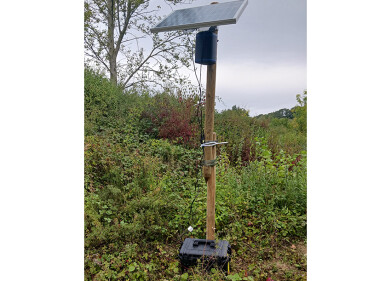Air Quality Monitoring
Why Are Emissions Being Measured? - Health
Dec 27 2021
Over recent years, comprehensive monitoring of emissions from power plants, passenger vehicles and other leading sources of pollution has become common practice in the UK and beyond. This is, in part, to keep tabs on how concentrations of greenhouse gases affect climate change and global warming – but a more immediate reason for doing so is the health of humans, animals and plants on the planet.
From a human perspective, air quality is a particularly hot potato right now. That’s because poor air quality is considered by the British government as the biggest environmental danger facing the population at the present time. While climate change might represent a greater long-term threat, the short-term effects of exposure to air pollution can be both swift and deadly.
Which kinds of emissions are being measured?
Particulate matter (PM) is considered the biggest risk to human health in terms of contaminants in our atmosphere. The combustion of fossil fuels in both domestic and industrial settings, alongside the tailpipe emissions and the wear and tear on tyres and breaks of passenger vehicles are other leading contributors to PM pollution.
However, PM isn’t the only threat on the horizon. Nitrogen dioxide (NO2), ammonia (NH3), sulphur dioxide (SO2), volatile organic compounds (VOCs), ozone (O3) and carbon monoxide are all serious concerns when it comes to safeguarding human health. While carbon dioxide (CO2) and methane (CH4) might steal the headlines from a global warming perspective, the aforementioned emissions are far more relevant to immediate human health complications.
How do emissions impact human health?
In a tangible sense, these contaminants most commonly cause or exacerbate conditions which affect the respiratory and cardiovascular systems within the body. Prolonged exposure to poor quality air can contribute to the contraction of life-threatening diseases like cancer and other lung- or heart-related diseases. Nonetheless, short-term exposure can also be lethal in extreme cases.
In fact, Public Health England (PHE) estimates that long-term exposure to air pollution causes up to 36,000 premature deaths in the country each year. Even a modest decrease in concentrations of PM pollution (just 1µg/m3 less) would result in 50,900 fewer cases of coronary heart disease, 16,500 fewer strokes, 9,300 fewer diagnoses of asthma and 4,200 fewer lung cancer patients across 18 years.
The fiscal effect
Those figures are jarring enough in themselves, but the importance of monitoring emissions is brought into even starker focus when the financial ramifications of doing so are considered. As far back as 2010, the Environment Audit Committee compiled a report which estimated the cumulative cost of air pollution on public health in the UK at between £8 billion and £20 billion.
That figure encompasses the medical bills associated with treating those who suffer from respiratory or cardiovascular ailments brought on by poor air quality, as well as the adverse impact on productivity that sick days and recovery times entail. For more information on why, how and where emissions are being monitored in the UK and abroad, the 2022 edition of the CEM conference is set to take place virtually this March. Interested parties are invited to attend.
Digital Edition
AET 28.4 Oct/Nov 2024
November 2024
Gas Detection - Go from lagging to leading: why investment in gas detection makes sense Air Monitoring - Swirl and vortex meters will aid green hydrogen production - Beyond the Stack: Emi...
View all digital editions
Events
Nov 26 2024 Paris, France
Nov 27 2024 Istanbul, Turkey
H2O Accadueo International Water Exhibition
Nov 27 2024 Bari, Italy
Biogas Convention & Trade Fair 2024
Nov 27 2024 Hanover, Germany
Dec 02 2024 London, UK




.jpg)







.jpg)






